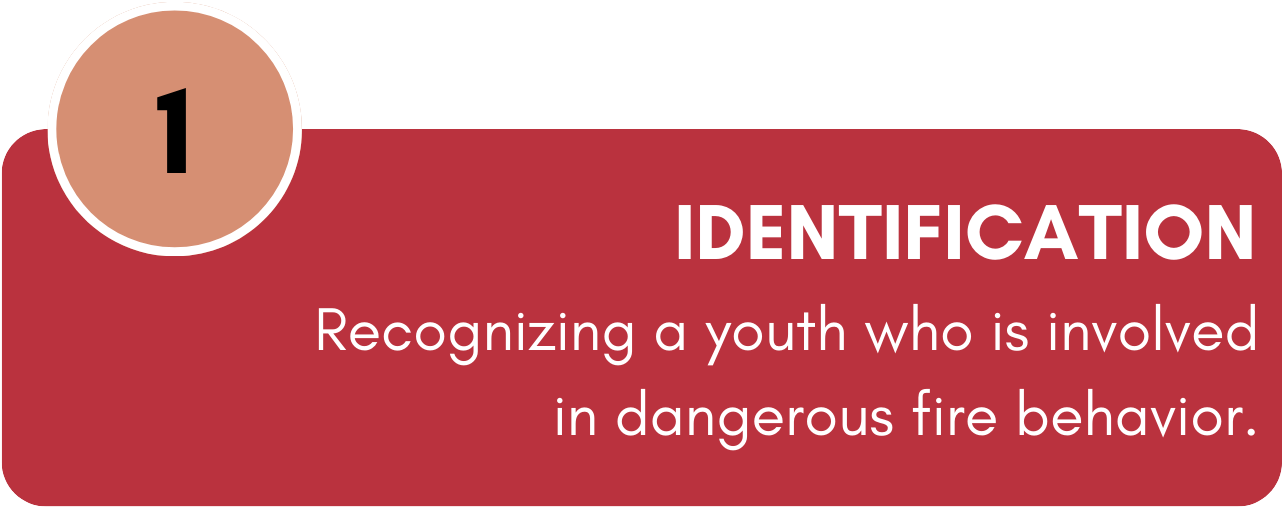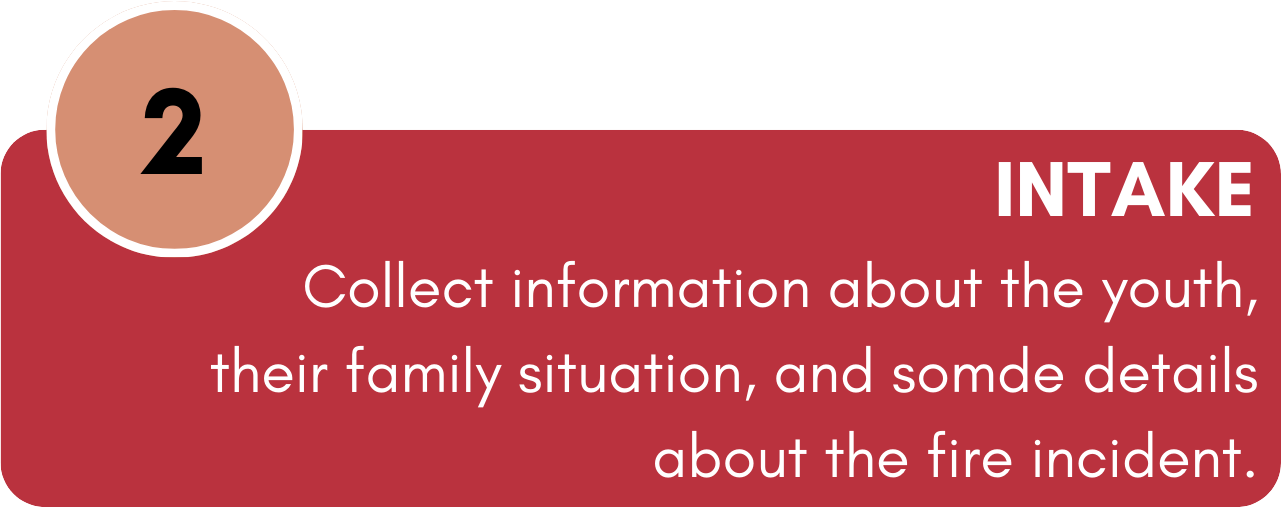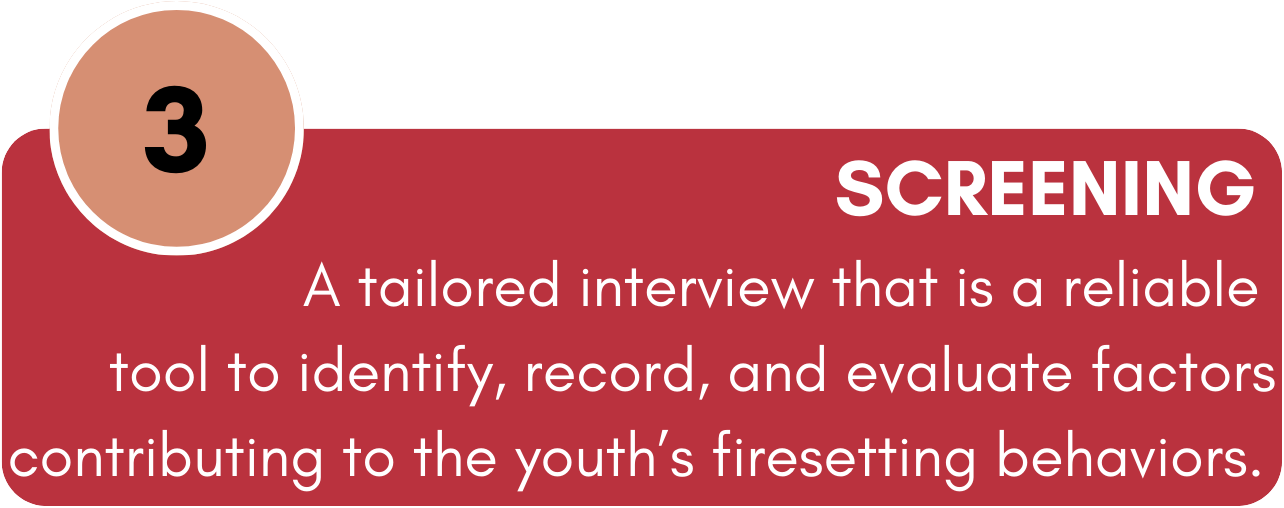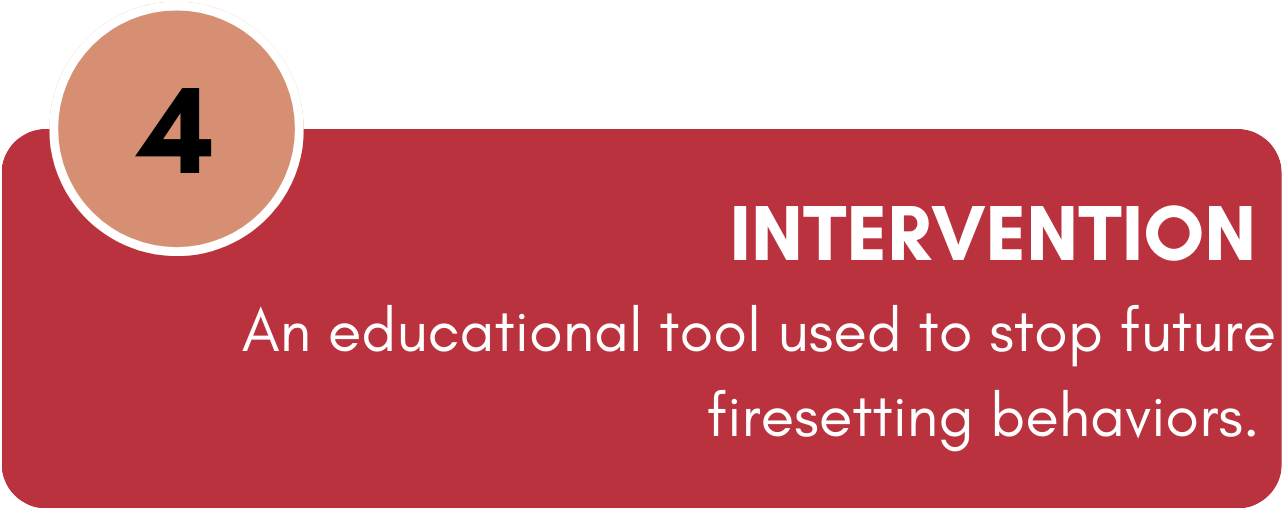Youth Fire Intervention Program
Durango Fire & Rescue's Youth Fire Intervention Program is designed to assess risky behavior in adolescents who show an unhealthy curiosity about fire. This free program is conducted in a welcoming, one-on-one session between the child and Youth Firesetting Intervention Specialists.
Firesetting can be a dangerous and even deadly issue among youth. Most experts agree that the best way to understand firesetting behavior is to look at where and why children set fires. With this knowledge, fire education for a youth who has set a fire can begin. Education includes: understanding the physical, social, psychological, legal and monetary consequences of a fire. Fire Intervention also involves educating the family about home safety and fire knowledge.
Youth Fire Intervention Process





Q. Why does a family have to participate in this program?
A. Education is the foundation to prevention. Complete family participation in the program allows us to create a plan that works for everyone.
Q. Is this program confidential?
A. Everything is confidential and intended to help you keep your family safe from fire.
Q. How does this program align with other programs we may be required to attend?
A. The program ties into the larger scope of a “Whole Community Involvement” concept. The coalition partners include fire service, law enforcement, criminal justice, schools and social service agencies in servicing the needs of youth and their family.
Q. What are the goals my family should expect from this program?
A. Both child and caregiver will learn what they can do to make the home a safer place to live.
- Curiosity: Begins around age 3-5. Includes both boys and girls. Use fire out of fascination/curiosity. Can lead to future, unwanted events.
- Crisis/cry-for-help: May be calling attention to an underlying problem. May have poor coping skills. Home change or chaos is common. Most common with girls.
- Thrill-seeking: Youth like to experiment with fire. Like to experience the danger and sensation of risk-taking. Highly influenced by peers and social media.
- Delinquent: Willful intent to cause destruction. Influenced by peer-pressure, boredom, or showing off. May have troubling behavioral history. May set fire to hide other crimes.
- Severally Disturbed/Cognitively Impaired: History of dysfunction in all aspects of life. Use fire as a gratification tool. Keep records of their fires.
- A child or adolescent has usually started multiple fires that went undetected before setting the fire for which they got caught.
- Younger children are more likely to set fires at home, and older children and adolescents are more likely to set fires which occur in school.
- Research shows that without intervention, youthful firesetting behavior tends to continue.
- Boys are more likely to engage in fireplay than girls.
- A child’s bedroom accounts for most of child-playing home fires.
